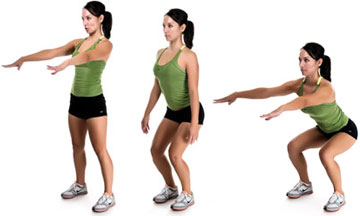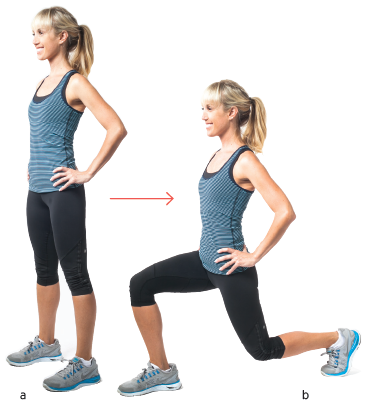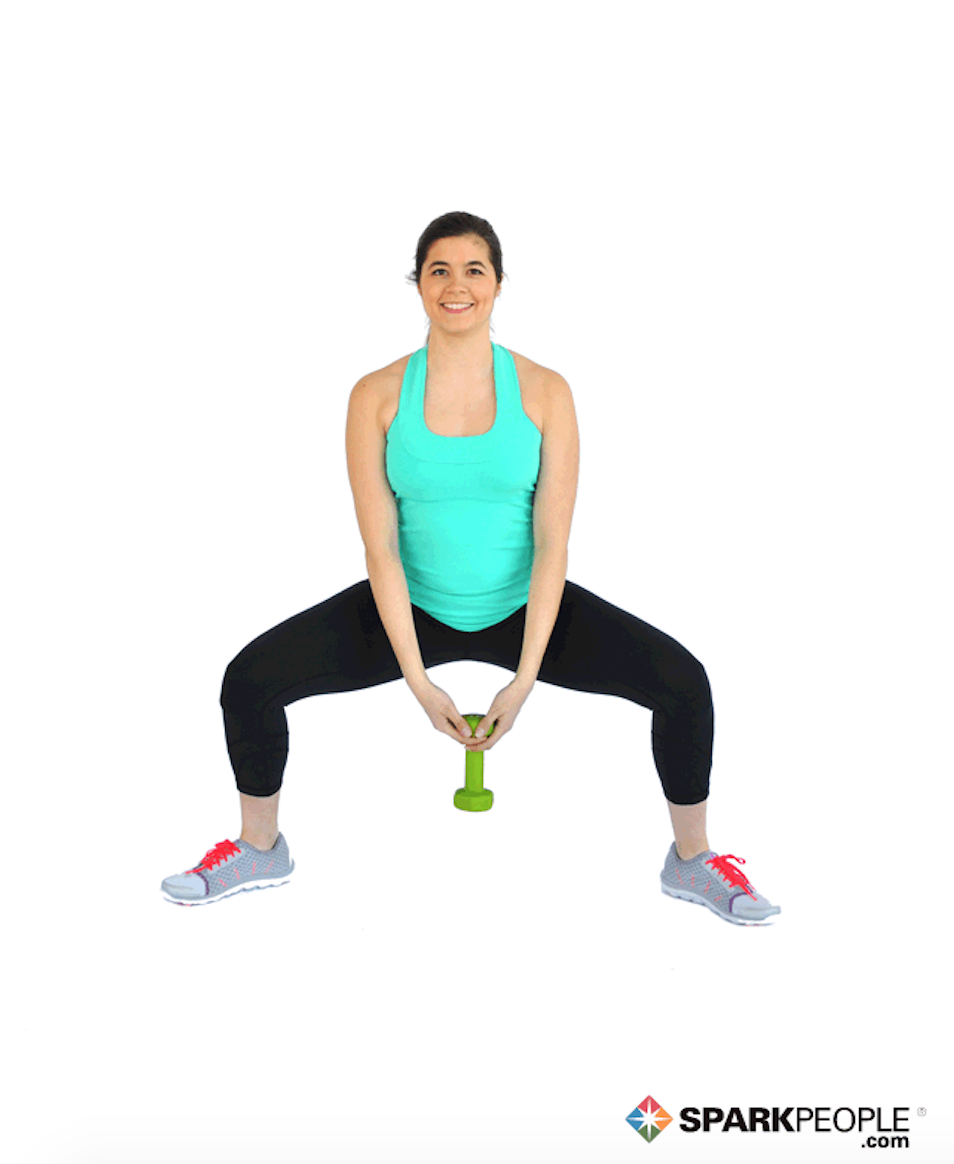There's no big red "Easy" button for getting fit. Just as weight isn't gained overnight, losing it requires steady, sustained effort. That said, you don't have to go to the other extreme, putting the rest of your life on hold to spend the bulk of each day at the gym. The key to success is breaking down big goals into small, manageable chunks. Instead of fighting to find a spare hour for exercise, for example, set your sights on a quick 10-minute workout.
It sounds too good to be true, right? Can such a short session really deliver body-changing benefits? Some science says yes. In a 2016 study published in the journal PLOS One, 10-minute workouts that included one minute of intense activity were shown to provide the same cardio and metabolic boost as traditional 45-minute sessions. In addition to making it easier to fit exercise into a busy schedule, shorter workouts also cause your heart rate to go up and down throughout the day, similar to interval training.
Lisa Payne, wellness expert and creator of the 10-Minute Workout, points out that small bouts of exercise can add up to a big lifestyle change. "In addition to improving strength and cardio, 10-minute workouts motivate you to make better choices overall," she says. "Someone who gets in little bits of activity will be more likely to choose healthier meals, focus on getting a solid night’s rest and work on their stress management. It’s about cultivating a lifestyle—and sometimes, it only takes a daily 10-minute workout to serve as that reminder." <pagebreak>
Meet the 10-Minute Workout
Ten minutes can be a lot of different things to a lot of different people. For those who spend their days in cubicles or offices, 10 minutes of jogging up and down the stairs after a particularly stressful meeting provides both catharsis and energy. For the dad juggling three kids, a five-minute walk to the park followed by a five-minute game of tag is a compromise that everyone can agree upon.
Developed by the Master of Arts in Counseling Program from The Family Institute at Northwestern University, this specific 10-minute workout can be done in your home gym, hotel room or just about anywhere. Alternating between upper body, lower body and core, this functional, full-body routine is designed to maximize your short burst of activity. You can modify the moves to fit your personal needs, fitness goals and level of difficulty.
The exercises in this routine require no equipment, but instead rely on your own bodyweight for resistance. "Doing bodyweight exercises works more muscle groups at one time," Payne says. "In addition to strengthening, they also add a cardio element to the workout. They are challenging, time efficient and can be done almost anywhere."
One-Minute Warm-Up
March in place or do jumping jacks, butt kicks or high knees.
25 Squats
Step your feet out a little wider than hip-width, with your toes pointing forward. Bend your knees, keeping the majority of your weight on your heels. Pull in your abs to protect your low back.

10 Pushups
There’s a pushup for everyone at every level. Start by coming to the floor on all fours with your hands about shoulder-width apart at chest level. Keeping your knees on the floor, lower your upper body toward the ground by bending your elbows. For more of a challenge, switch to doing the pushups on your toes.
.png)
10 Triceps Dips
Dips are best done off a chair or step, but you can also do them on the floor. When using a bench, sit down with your hands on the bench and your fingertips pointing forward. Bend at the elbows to lower yourself down toward the ground, but don’t come all the way down. Next, push yourself up until your arms are straight again.

25 Crunches
Lay on the floor with your knees bent and your feet flat on the ground. Put your hands behind your head with your elbows pointed outward and your head relaxed. Using your core muscles, crunch your upper body up off the ground.

10 Reverse Lunges (each side)
Step one foot backward into a lunge so that your front and back legs make a 90-degree angle. Go as low as you can in your lunges, while keeping your back knee off the floor. Return your foot to meet the other at the starting position, then switch legs at the end of the repetitions.

10 Walkouts
Start standing straight. Bend forward at the hips, take your hands to the floor and walk them forward until you’re in a plank-like position with hands extended above the head. Walk the hands backward to come back up.

25 Sumo Squats
Stand in a wide stance with your feet turned out at 45-degree angles. Bend your knees into a squat and push the floor away with your heels as you stand. Keep your chest up and your back flat to avoid discomfort or injury.

10-Second Plank Hold
Hold the top of a a pushup position for a full count of 10 seconds. To modify and build strength, do this with the knees on the ground.

<pagebreak>
6 Jump-Start Tips for Beginners
- Don't skip the warm-up or cool-down. Think of these as the bookends of any effective workout. Payne likens working out on "cold" muscles to playing a guitar without tuning it first. "Warming up allows your body to get into the mindset that it's about to be put under the demands of exercise," she says. "It also loosens up your joints to help prevent injury." After the workout, cooling down means lowering your heart rate gently back to the resting zone, and also stretching the muscles you've worked. "Your cooling down time helps restore your body so it can stay active throughout your life," says Payne.
- Look for "exercise in disguise." A healthy body is an active body, and you don't have to be in a gym to get it moving. Payne suggests simple swaps like taking stairs instead of elevators, using a basket instead of a cart at the grocery store, taking your dog on an extra loop around the block or playing tag with your kids instead of just watching. Any type of physical activity benefits your body, even if you're not officially on the exercise clock.
- Take it slow. Overzealous exercisers can sometimes end up sidelined by injury just as they're building momentum. To avoid this, ease into your new regimen. Payne recommends starting with lighter weights and gradually working your way up. The same goes for cardio: "There’s no need to burn yourself out on the treadmill. Baby steps lead to making exercise a regular appointment in your schedule."
- Ask questions. In the exercise arena, knowledge is power. If you're not sure what type of exercises to do or how to execute them, find a fitness professional who can point you in a safe, effective direction.
- Use the buddy system. Payne says the best way to stay motivated is to find a friend, co-worker or family member who has similar goals and a similar schedule. Set up a time to work out, meet for a healthy lunch or even just to take a walk.
- Keep your goals in plain sight. Whether it's to lose 10 pounds, build more muscle or have more energy, your goals will always be the biggest motivator of all. "If you want something bad enough, you will find a way," says Payne. She recommends writing a goal or two on a sticky note and putting it on your front door, so that every time you leave, you'll be reminded of the things you want most.
We all have the same number of hours in each day—the key is prioritizing what's most important. By committing to sprinkling in 10-minute workouts throughout your day, you can bring your goals within reach without deconstructing your day.


.png)






.jpg)






